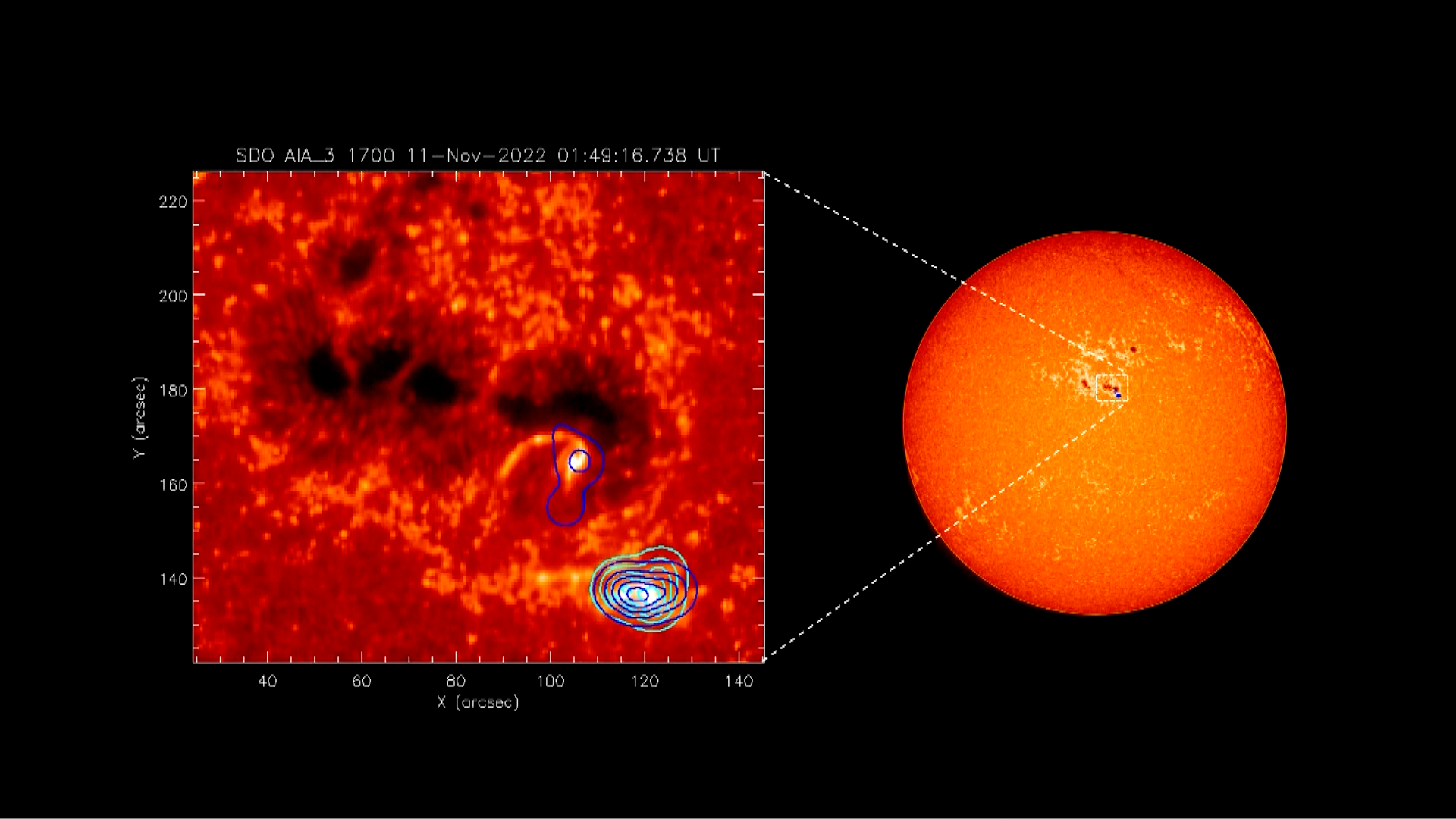00:42

China released a scientific image of the surface of the sun on Monday, the very first image produced by its "Hard X-ray Imager (HXI)" in space and the only one of its kind available around the world.
The Purple Mountain Observatory of the Chinese Academy of Sciences (CAS) released the image, captured by China's Kuafu-1 satellite and its Advanced Space-Based Solar Observatory (ASO-S), which was successfully launched from the Jiuquan Satellite Center back in October.
The solar flare is one of the two most intense erupting phenomena on the sun, which can release huge bursts of energy in a short period of time. More than half of the energy released by the solar flare can be seen in the form of high-energy particles, which can directly escape from the sun and have an impact on the space environment of the Earth. They can also interact with the solar atmosphere to produce non-thermal hard X-rays and even gamma bremsstrahlung radiation.
By observing the solar hard X-rays, experts can deduce information on magnetic reconnection and accelerating electrons of solar flares, which forms the basis of flare physics studies.
The Purple Mountain Observatory stated that the first image of HXI released shows an M-class flare erupted at 1 a.m. on November 11, after the satellite's observatory had only been powered on for 20 days.
According to scientists, by comparing the HXI data of the flares that erupted on November 11 with the images of the Solar Atmospheric Imager (AIA) on the Solar Dynamics Observatory (SDO), it is evident that the various functional indicators of HXI have reached their expected goals.
Since the Advanced Space-Based Solar Observatory (ASO-S) was launched into orbit on October 9, the HXI imaging instrument, which is one of the three major payloads on ASO-S, has carried out various in-orbit tests and functions, with results showing that the payload has been operating under normal conditions, with its performance meeting its design goals. The instrument has been successfully put into operation for scientific observations.